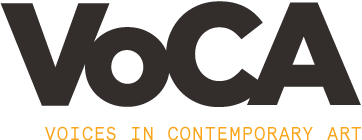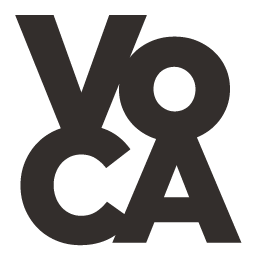Editor’s Note
Welcome to the Winter 2016 edition of VoCA Journal. In this issue, our contributors debate the virtues of consulting artists regarding the long-term stewardship of their work.
Katherine Sanderson (Assistant Conservator of Photographs at the Metropolitan Museum of Art) unpacks the nuanced conservation issues embedded in Matthew Brandt’s photographic series, Lakes and Reservoirs. Brandt’s practice includes a kind of feedback loop in which his photographs, once developed, are then treated with material extracted from their subjects. As a result of Brandt having soaked Mary’s Lake MT 9 (2012) in water drawn from the lake that it depicts, Sanderson writes, the print “has an almost sculptural topography” including areas where “the gelatin binder has redeposited in thick, glossy masses.” What is the proper degree of intervention to preserve the integrity of works such as these? Sanderson’s text concludes by answering the question, “which aspect of the piece is more important, the physical materials or their destruction?”
Maria Theodoraki (artist and doctoral candidate at the Universidade Nova de Lisboa) considers the notion of destruction from a different point of view in her essay, “Issues of Display: Protecting the Object, Damaging the Artwork.” Critiquing several recent exhibitions in which works from Lygia Clark’s Bicho sculpture series (1960–64) were presented under vitrines—despite Clark’s expressed wish that they be actively handled by her audiences—Theodoraki surmises that at times protecting the physical objects can diminish them conceptually. She offers alternatives that would strike a different balance between competing concerns for fragile works that are nonetheless intended to be interactive.
A think piece by Christian Scheidemann (Senior Conservator, President at Contemporary Conservation Ltd.) seeks to contextualize artist interviews within a broader research portfolio for contemporary art conservators. He observes that while “the discourse between artist and conservator is a relatively recent development, and is certainly one of the undisputed advantages and attractions of contemporary art conservation,” the conservator in private practice must consider multiple stakeholders when determining treatments. Scheidemann notes that “when an artwork departs from the artist’s studio … it joins the greater network of all the moving parts that comprise the art world, and thus its relationship to the artist changes.” Whilst taking all documentation and points of view into consideration, Scheidemann advocates an approach to conservation that privileges and preserves the historicity of contemporary artworks.
The fourth article in this issue takes the form of a discussion between James McElhinney (oral historian and artist) and Ronnie Landfield as part of a larger oral history the two have been developing together. The interview covers Landfield’s experiences as a painter working in Manhattan since the 1960s, his encounters with Clement Greenberg and Larry Poons, and his recent relocation to a purpose-built studio in upstate New York. In contrast to the preceding essays, this piece reflects a primary attachment to the textures of anecdote and the spoken word.
Robin Clark


